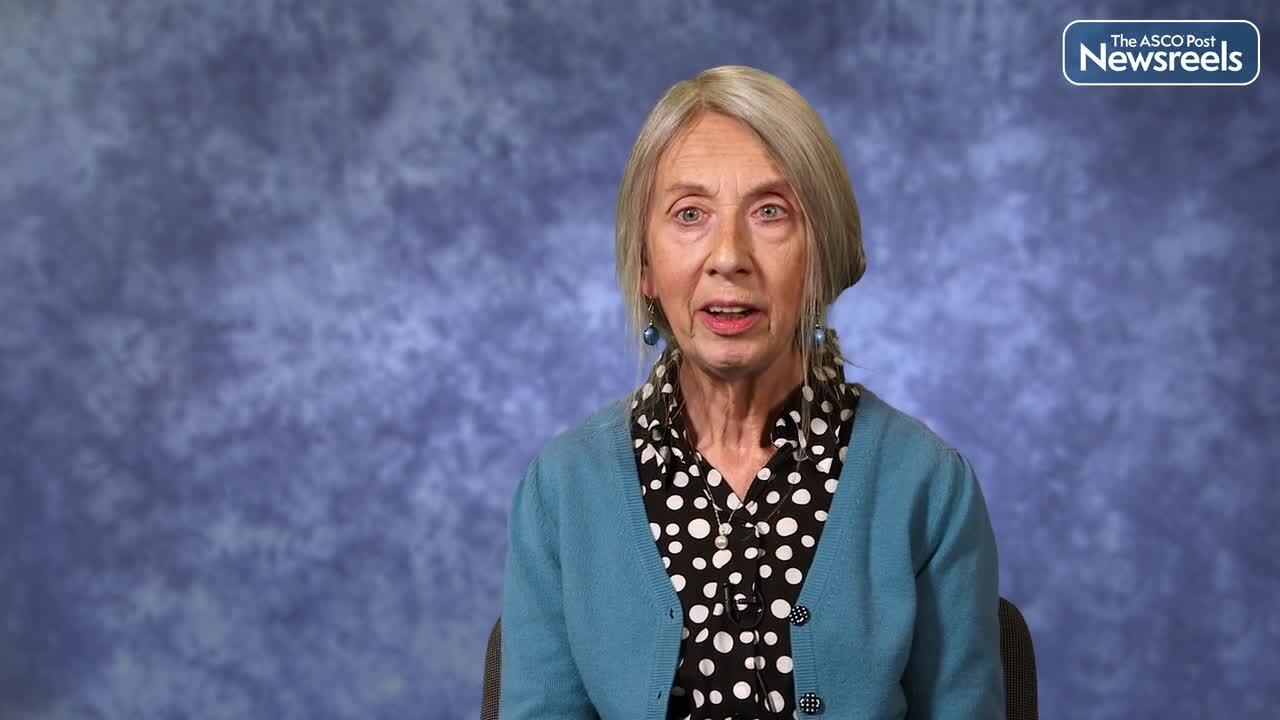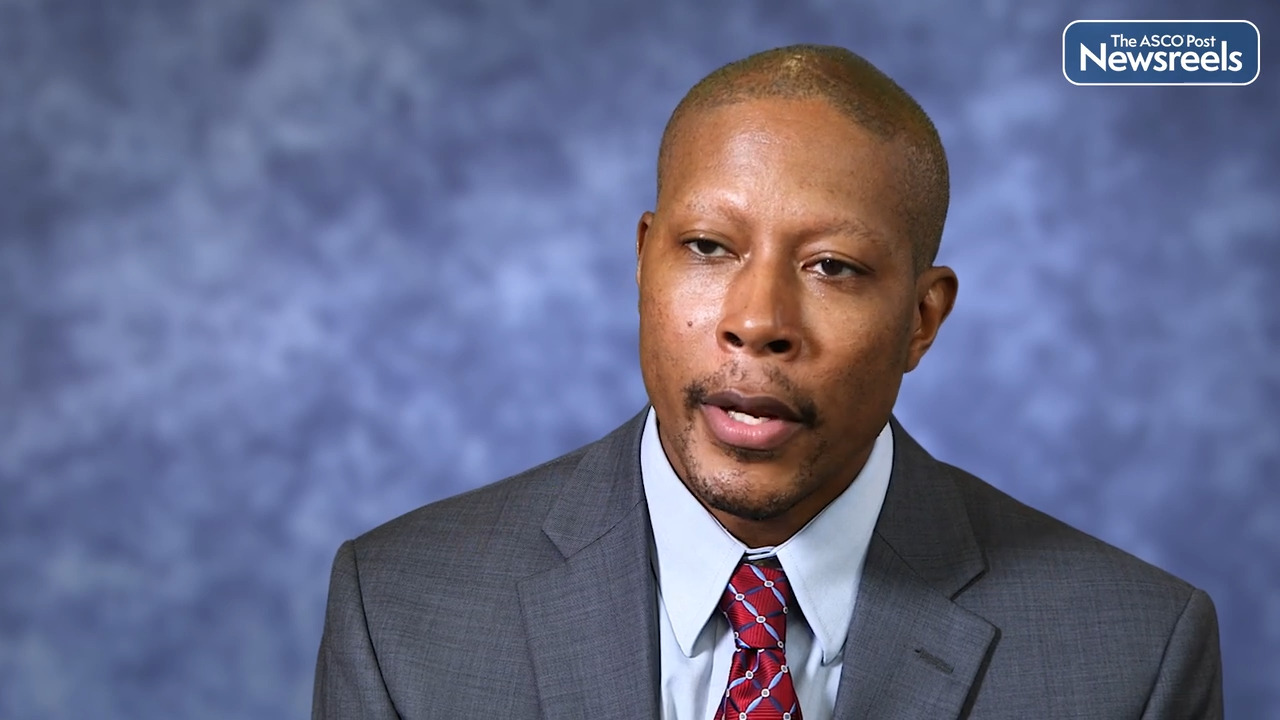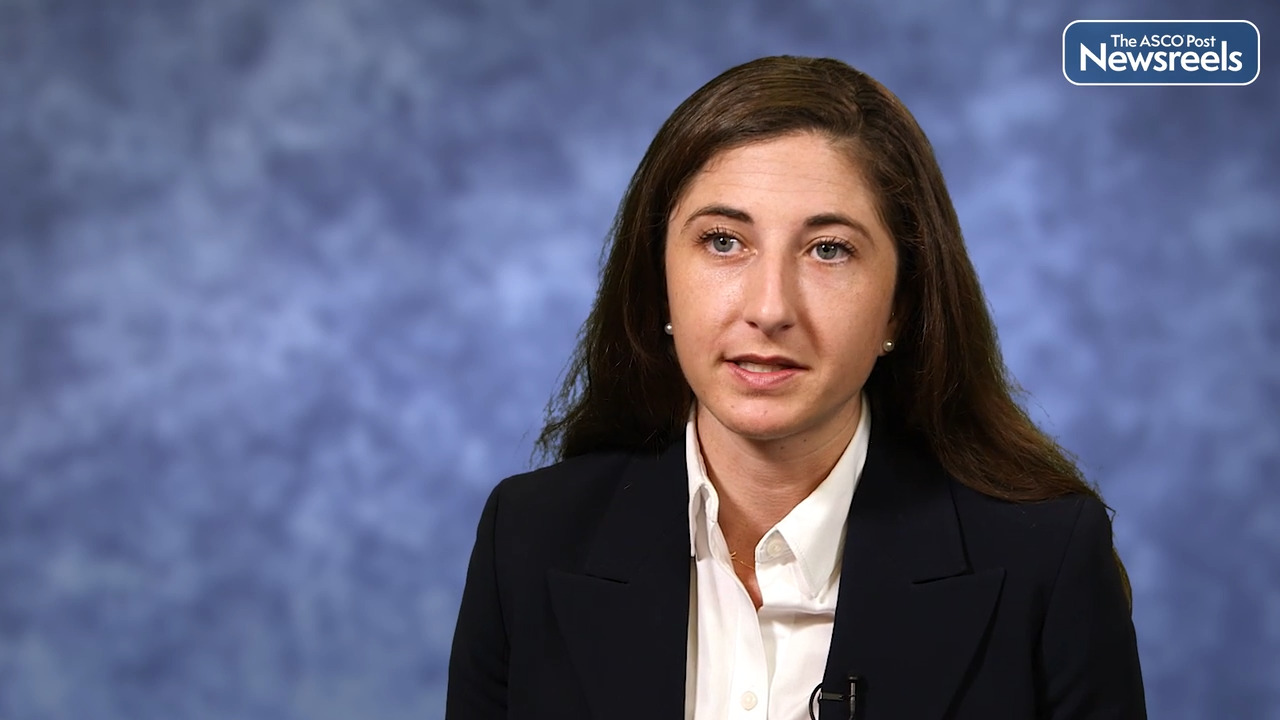Paolo F. Caimi, MD, on DLBCL: Outcomes After R-ICE Chemoimmunotherapy
2022 ASH Annual Meeting and Exposition
Paolo F. Caimi, MD, of the Taussig Cancer Institute, Cleveland Clinic, discusses new findings showing that patients with diffuse large B-cell lymphoma (DLBCL) who achieve a complete response after salvage therapy with rituximab, ifosfamide, carboplatin, and etoposide (R-ICE) can achieve long-term disease control, regardless of the time to relapse from initial therapy, particularly if they proceed to autologous stem cell transplant (ASCT). These results suggest that second-line chemotherapy followed by ASCT and/or CAR T-cell therapy for chemosensitive and chemorefractory patients may maximize patient outcomes, regardless of time to relapse (Abstract 156).
Transcript
Disclaimer: This video transcript has not been proofread or edited and may contain errors.
We found that the proportion of patients that have early relapse or refractory disease after R-CHOP or dose adjusted EPOCH that actually achieve a complete remission after R-ICE is approximately 30% of patients. And that those patients can, when they achieve a complete remission, and then go on to an autologous transplant, have comparable progression-free survival and overall survival with respect to patients who are late relapsers who are generally considered to be more chemosensitive.
The implication of these findings is primarily to show that among those who have early relapse, there's a small portion of patients, about a third of patients, who are still chemosensitive who could potentially, if they achieve a complete remission, proceed to an autologous transplant and have expected progression for survival that's about 50% at four years.
The importance of this is that in a current scenario where CAR Ts are preferred for patients with early relapse, we are still, because of logistics, because of access, and because of the global access to CAR T-cells, there's still patients that cannot access CAR T-cells before receiving salvage chemotherapy, or cannot access to CAR T-cells at all.
So we wanted to document what happens with a chemosensitive patient that has received R-ICE, achieves complete remission, and whether an autologous transplant can provide them long-term disease control, which we found. I think it is in line, in terms of results, of what we see on the recent ZUMA-7 and TRANSFORM trials showing the superiority of CAR Ts in terms of event for survival with respect to salvage chemotherapy for a population that is overall expected to be more chemo-resistant.
However, it shows that those who happen to be chemosensitive among those that are early relapsers can have long-term disease control. Future studies will include further refinement of the assessments of the outcomes of patients who achieve a partial remission and then went on to receive a transplant. And we think that with this data, our perspective is that we should evaluate whether CAR Ts, compared to an autologous transplant used as consolidation for patients who have a complete response or a partial response, can achieve even better outcomes than those that are achieved by adding a transplant as consolidation. I think that will validate whether adding another type of treatment modalities such as immune cell effector cells for consolidation could provide even better long-term outcomes.
The ASCO Post Staff
Irene Roberts, MD, of Oxford’s Weatherall Institute of Molecular Medicine, discusses children with Down syndrome, who have a more than 100-fold increased risk of developing acute myeloid leukemia before their fourth birthday compared to children without Down syndrome. Their risk of acute lymphoblastic leukemia is also increased by around 30-fold. Dr. Roberts details current knowledge about the biologic and molecular basis of this relationship between leukemia and Down syndrome, the role of trisomy 21 in leukemogenesis, and the clinical implications of these findings.
The ASCO Post Staff
Tycel J. Phillips, MD, of the City of Hope National Medical Center, discusses data that showed fixed-duration glofitamab monotherapy induced high and durable complete response rates in patients with mantle cell lymphoma (MCL) who received obinutuzumab pretreatment. This is one of the largest data sets and longest follow-ups reported with a CD20/CD3 bispecific monoclonal antibody for patients with relapsed or refractory MCL (Abstract 74).
The ASCO Post Staff
Andrew Matthews, MD, of the Abramson Cancer Center, University of Pennsylvania, discusses findings from a large, multicenter study that showed superior outcomes with 7 + 3 chemotherapy (cytarabine continuously for 7 days, along with short infusions of an anthracycline on each of the first 3 days) vs venetoclax in patients with acute myeloid leukemia (AML). In this real-world data set, the 7 + 3 cohort outperformed historical benchmarks in overall survival and early mortality, perhaps reflecting improved later lines of therapy and patient selection. Prospective studies (such as NCT04801797) must confirm the superiority of intensive chemotherapy (Abstract 426).
The ASCO Post Staff
Smita Bhatia, MD, MPH, of the Institute for Cancer Outcomes and Survivorship, University of Alabama at Birmingham, discusses study findings that showed key somatic mutations in the peripheral blood stem cell product increases the risk of developing therapy-related myeloid neoplasms (Abstract 119).
The ASCO Post Staff
Kathryn R. Tringale, MD, of Memorial Sloan Kettering Cancer Center, discusses an assessment of 559 patients with primary central nervous system (CNS) lymphoma and the factors associated with consolidation therapy selection, outcomes after consolidation therapy accounting for patient factors, and patterns of disease failure. The initial treatment response was prognostic and predictive of relapse patterns (Abstract 557).





